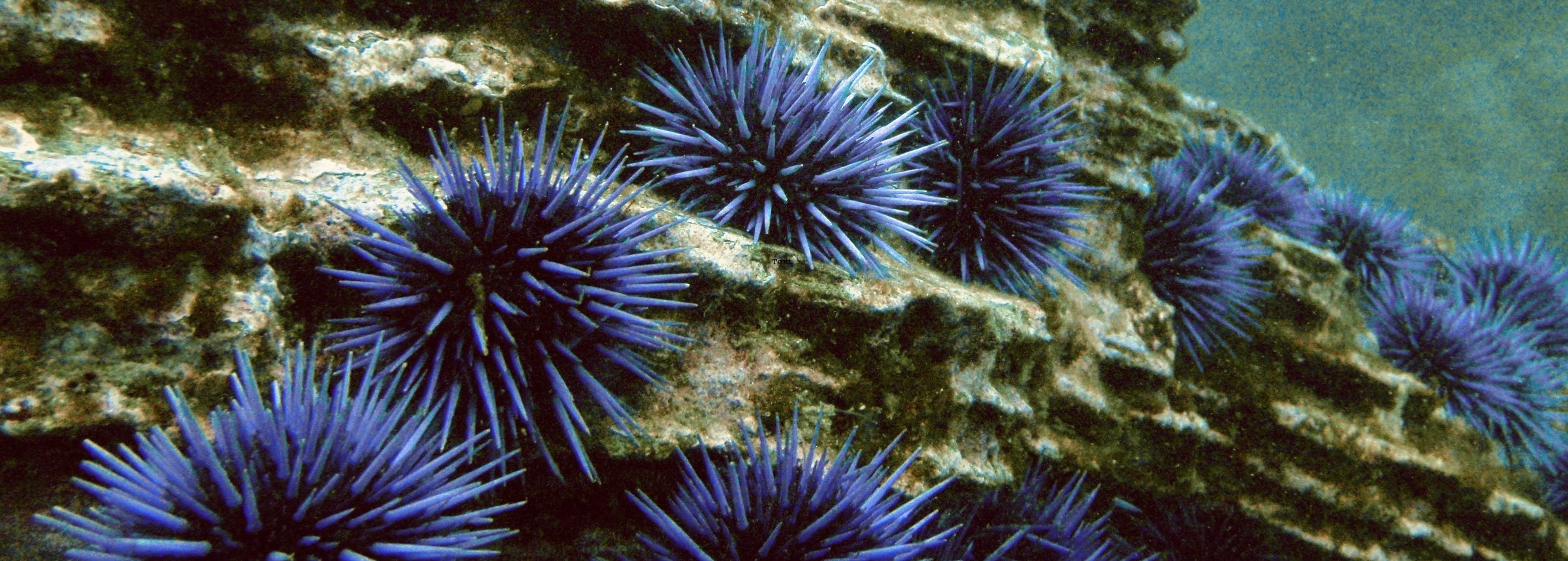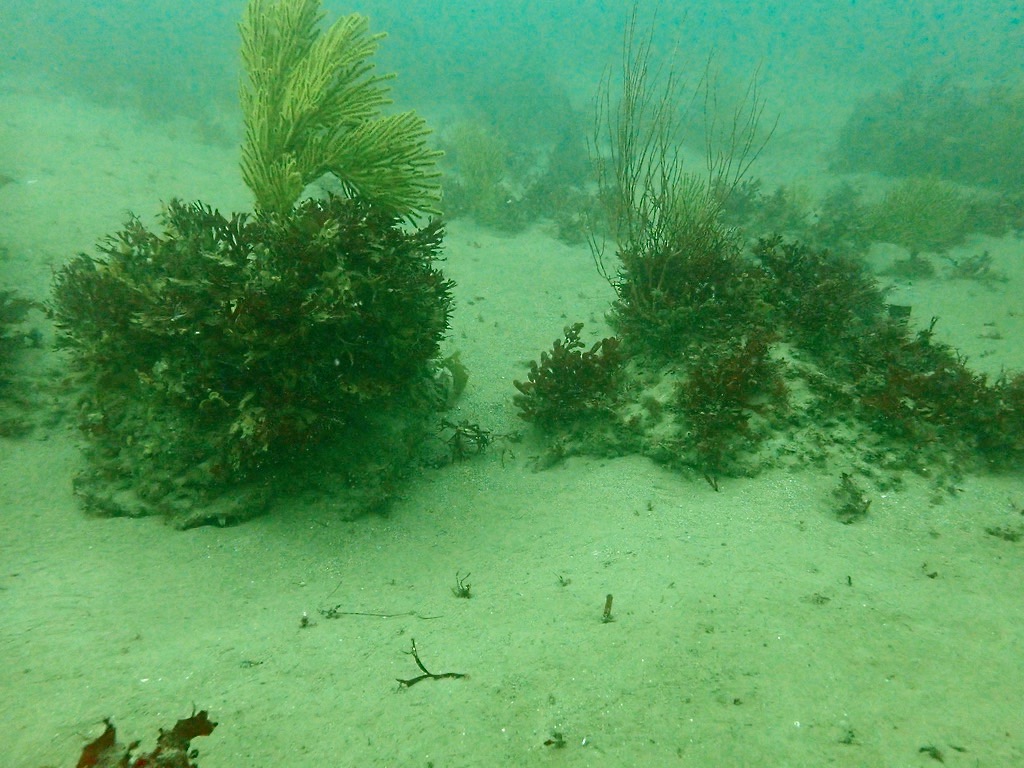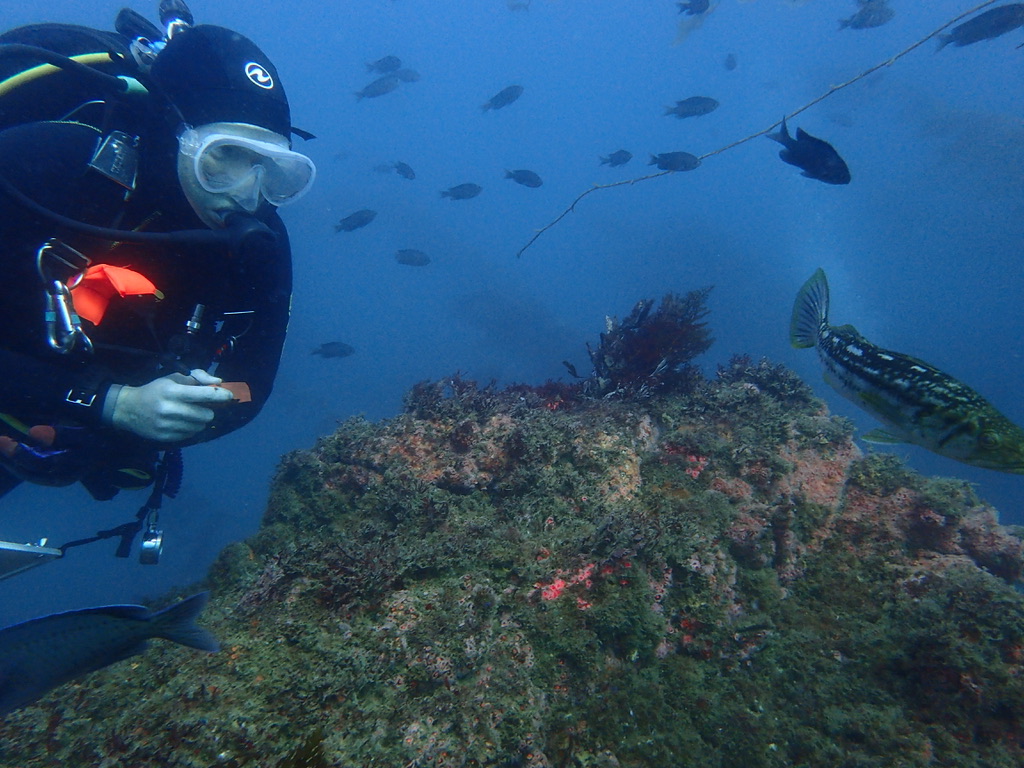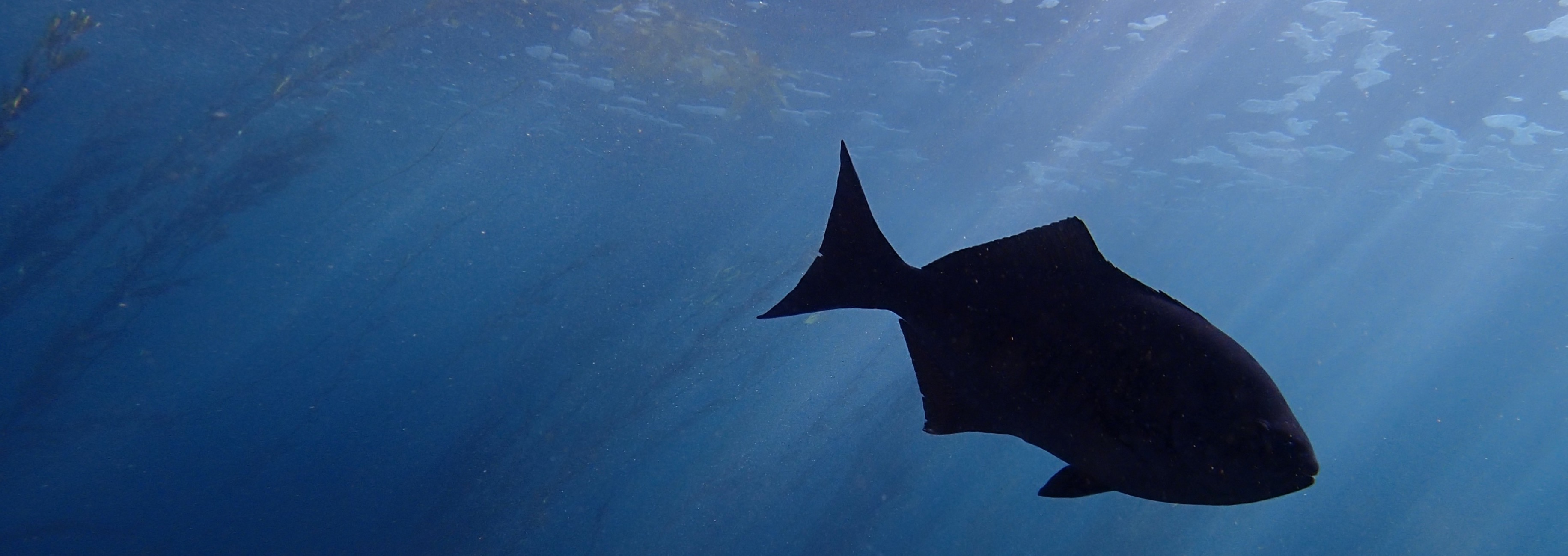We perform studies of the rocky reef ecology of Southern and Baja California using a variety of different methods. We have been monitoring fish populations at all life stages in southern California since 1974.
Habitat Restoration Projects
Current restoration projects include kelp bed restoration and subtidal reefing—the largest and most extensive field research projects of their type in southern California.
Palos Verdes Reef Restoration Project
The Portuguese Bend landslide on the Palos Verdes Peninsula began in the late 1950’s, releasing large amounts of sediments to the ocean between Whites Point and Abalone Cove and covering a large section of rocky reef habitat. Despite this source of sedimentation, productive rocky reef and kelp forest habitat extended well offshore and downshore towards Whites Point as recently as the late 1980’s. In the early 1990’s there were patches of buried reef adjacent to Portuguese Bend but this burial did not extend to the southeast. On June 2, 1999, a massive landslide occurred involving 17 acres near the Trump National Golf Course.
At present, in the region of the peninsula between Portuguese Bend and Point Fermin much of the historic low-lying reefs
continue to be heavily impacted by sedimentation due to reef burial and scour from these historic landslides. The only healthy reefs in the area are characterized by high-relief rocky outcrops that are resistant to the effects of sedimentation.The Palos Verdes Reef Restoration Project seeks to restore rocky-reef habitat by emulating the form of the most productive extant reef in the region, KOU Rock (right), which consistently has greater fish biomass than any other reef on the peninsula.
Funding Source: NOAA Montrose Settlements Restoration Program
Lead Staff Researchers: Jonathan Williams, Matt Robart
Publications: Restoring a nearshore rocky reef ecosystem in the challenge of an urban setting (Pondella et al. 2018)
Presentations: Poster atGEOHAB Conference 2018
Kelp Forest Restoration
Adjacent to the largest urban area on the west coast of the United States, kelp forests in Santa Monica Bay are directly affected by anthropogenic impacts associated with urban development and population increase. These include an extensive and diverse set of stressors including commercial and recreational fishing, sedimentation, urban runoff, and pollution. Subtidal observations by Santa Monica Baykeeper in 2010 identified 61.5 hectares of nearshore rocky reef that were dominated by high densities of purple sea urchins and devoid of kelp. Subsequent community monitoring efforts have further qualified these barrens as areas featuring low diversity and productivity relative to areas of the Palos Verdes Peninsula that were currently supporting temporally and spatially stable giant kelp forests. Further, the urchins in these barrens are in poor physical condition with low gonadosomatic indices relative to urchins in neighboring kelp forests. The persistence of these urchin barrens, especially in the context of favorable conditions for giant kelp recruitment and development in southern California, argues for the active restoration of these barren reefs. The goals of this project is to reduce the density of purple sea urchins (Strongylocentrotus purpuratus) to two per square meter within the boundaries of sea urchin barrens off the Palos Verdes Peninsula, which will in turn minimize sea urchin grazing pressure and restore biogenic habitat to rocky reefs that historically supported kelp forests. Over time this will increase the spatial and temporal stability, biomass, and production associated with kelp forests and rocky reefs on the Palos Verdes Peninsula. The VRG assesses the response of these communities to restoration activities through annual subtidal monitoring at restoration sites.
Funding Source: NOAA Montrose Settlements Restoration Program
Partners: The Bay Foundation, Los Angeles County Sanitation Districts, Commercial Sea Urchin Harvesters
Lead Staff Researcher: Jonathan Williams
Publications: Kelp forest habitat restoration has the potential to increase sea urchin gonad biomass (Claisse et al. 2013) | Sea urchin mass mortality rapidly restores kelp forest communities (Williams et al. 2021)
Press Release: New Hope for Kelp Beds and Commercial Fisheries after Sea Urchin Devastation
Predicting Optimal Sites for Artificial Reefs
Funding Source: NOAA Saltonstall-Kennedy Grant
Lead Staff Researcher: Amanda Zellmer
Publications: Predicting optimal sites for ecosystem restoration using multi-species distribution modeling (Zellmer et a. 2019)
Long-Term Monitoring
Diver transects and ichthyoplankton studies are an integral part of our research and are among the longest continuous studies of reef fishes in the world.






